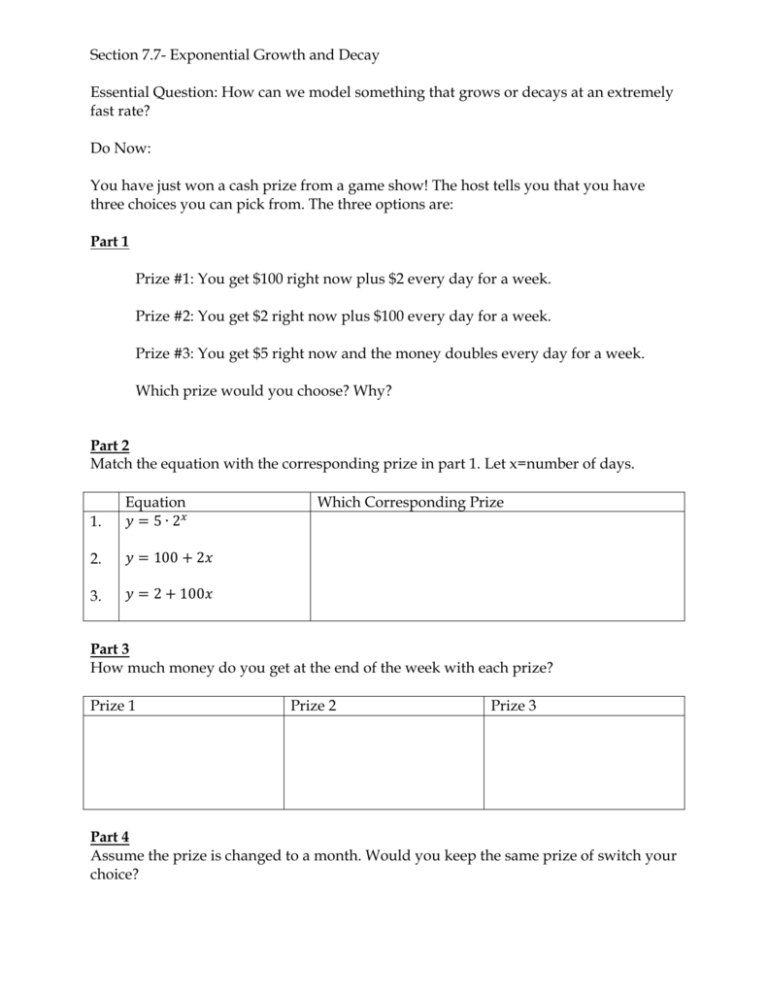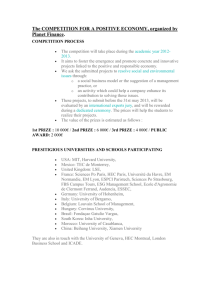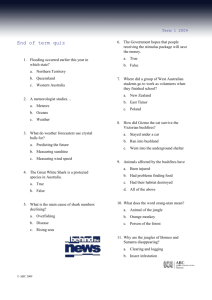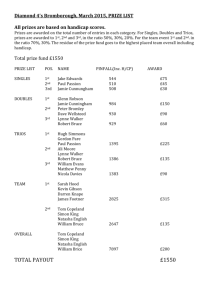Section 7.7 Notes - Verona School District
advertisement

Section 7.7- Exponential Growth and Decay Essential Question: How can we model something that grows or decays at an extremely fast rate? Do Now: You have just won a cash prize from a game show! The host tells you that you have three choices you can pick from. The three options are: Part 1 Prize #1: You get $100 right now plus $2 every day for a week. Prize #2: You get $2 right now plus $100 every day for a week. Prize #3: You get $5 right now and the money doubles every day for a week. Which prize would you choose? Why? Part 2 Match the equation with the corresponding prize in part 1. Let x=number of days. 1. Equation 𝑦 = 5 ∙ 2𝑥 2. 𝑦 = 100 + 2𝑥 3. 𝑦 = 2 + 100𝑥 Which Corresponding Prize Part 3 How much money do you get at the end of the week with each prize? Prize 1 Prize 2 Prize 3 Part 4 Assume the prize is changed to a month. Would you keep the same prize of switch your choice? Exponential Functions Exponential Growth General Equation: _________________ Exponential Decay Values for a and b: o __________________ Sample Graph Values for a and b: o __________________ Sample Graph Example 1: Modeling Exponential Growth Suppose that in 1985, there were 285 cell phone subscribers in a small town. The number of subscribers increased by 75% each year after 1985. How many cell phone subscribers were in the small town in 1994? Write an expression to represent the equivalent monthly cell phone subscription increase. HINT: Use the general equation with exponential functions to help you model this situation. Compound Interest Formula 𝑟 𝑛𝑡 𝐴 = 𝑃 (1 + ) 𝑛 Example 2: Compound Interest Suppose that when your friend was born, your friend’s parents deposited $2000 in an account that pays 2.5% interest compounded monthly. What will the account balance be after 18 years? Example 3: Modeling Exponential Decay Example 4: Using Exponential Functions to Solve Equations A fisheries manager determines that there are approximately 3000 bass in a lake. a. The population is growing at a rate of 2% per year. The function that models that growth is y = 3000 • 1.02x. How many bass will live in the lake after 4 years? b. How many bass will live in the lake after 7 years? c. About how long will it be before there are 4000 bass in the lake? Classwork: 7.7 Practice Form K (Odds only) HW: p. 464-465 #9-17 odds, 23-27 odds, 28-30, 34








